These are just some events, local and national, that have to do with the Post Office. Special thanks to Ben Brown for his recollections – see his memoir in Something in the Water. Another great source is an article “Minnesota Mail Carrying Memories” by Paul Tanick from the April 1994 issue of the Branch Nine News. We welcome any additions, corrections, or stories – please contact us.
1823
The first mail came to Minnesota by a steamboat from St. Louis to Fort Snelling.
1847
Postage stamps were instituted nationwide.
1851
The first Post Office was established in Minneapolis.
1856
Minnesota’s first mail service was carried on horseback and on foot. Stage service ran from 1861 to August 1870.
1873
Minneapolis city postal delivery was established.
1887
Central mail service was established locally at what was called the Elmwood Post Office on October 20, 1887. O.K. Earle was sworn in as the first postmaster on September 24, 1887. People picked up their mail at the Minneapolis and St. Louis Depot. Although popular lore has it that St. Louis Park was originally called Elmwood, this was merely the name of the post office, as the St. Louis Park name had been established in early 1886.
1888
Chesley Hamilton was sworn in as the Elmwood Postmaster on August 4, 1888.
1889
Joseph Hamilton was sworn in as the Elmwood Postmaster on October 26, 1889. On March 12, 1889, the Village Council passed a resolution asking the Post Office to change the name of the Elmwood Station to the St. Louis Park Station.
1890
On February 8, 1890, the name of the Post Office was changed from Elmwood to St. Louis Park. Joseph Hamilton was sworn in as the Postmaster of the new SLP Post Office that same day.
1891
James T [J] Davis succeeded Joseph Hamilton as Postmaster on April 4, 1891.
1892
Charles Hamilton served as Postmaster and the Hamilton Building housed the Post Office until 1916.
1894
Charles R. Williams became Postmaster on May 14, 1894.
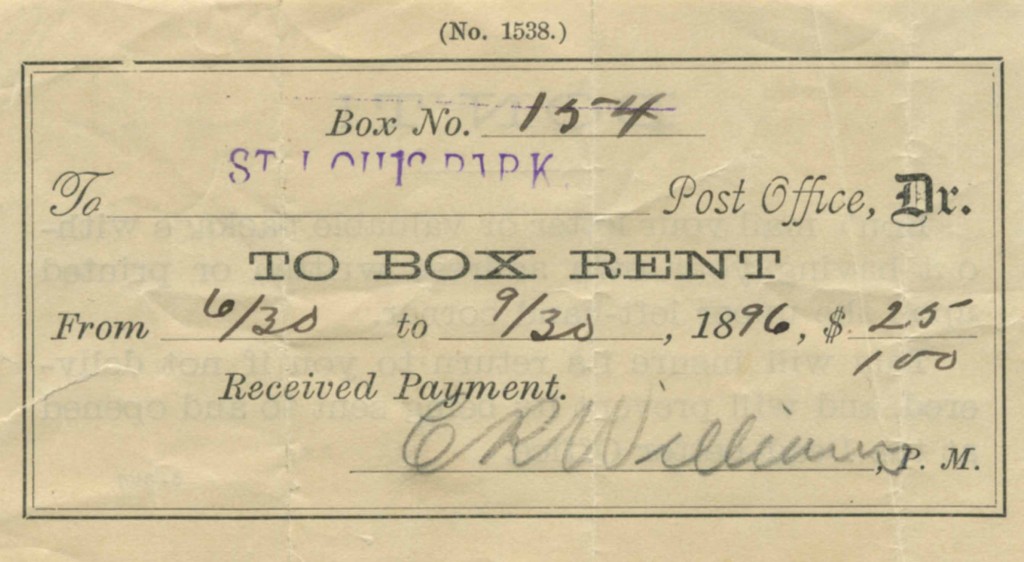
1897
The first rural free delivery mail routes were established as an experiment. In Minnesota, Farmington was selected and four routes were mapped out. Julius A. Miller became Postmaster on November 20, 1897.
1898
Willis S. Shaft became Postmaster on April 2, 1898.
1900
Charles Hamilton became Postmaster on December 28, 1900 and apparently kept the position for 15 years. The Post Office was in the Hamilton Building where he had his store, so they may have been one and the same.
1902
Rural free delivery began nationwide. George M. Whipple, who first came to St. Louis Park in 1901, was the first rural mail carrier out of the Park. His route took him 28 miles, filling 40 boxes. Whipple handled the route, which extended into Golden Valley, with a two-wheeled sulky, and sometimes by bicycle. Whipple started the route at age 32 and continued until 1915. In 1951 he lived at 4517 Minnetonka Blvd.
1906
Alma Drake Groskopf worked at the post office from 1906 to 1915. She came to the Park in 1897, and in 1951 she lived at 3800 Brunswick.
1914
Carriers were provided official vehicles instead of having to use their own transportation.
The Commercial Club discussed having the mail route to Brookside start from St. Louis Park instead of Linden Hills, but the residents didn’t want to change. Affected citizens included Merrill, Werner, Higgins, Force, and McCarty.
F. Verne Langdon became the Village’s Postmaster on November 25, 1914, at the age of 23. He held that title until St. Louis Park became a branch of the Minneapolis postal system on September 30, 1930, at which time he served as station superintendent until he retired in 1956. The local post office served about 700 residents. There was one rural route, but most people called for their mail at the post office.
1915
The post office moved from the Hamilton Building to the back of the new bank building at Main and Broadway [Dakota and Walker] in August 1915. Mail carrier Art Blacktin was the first depositor, irking the Marshall, who wanted the honor.
1916
The need for better roads in order to deliver the mail led Congress in 1916 to appropriate the nation’s first highway funds, specifically earmarked to states to improve postal roads.
1919
The bank failed in February 1919, and the Post Office moved to the front of the building. There were now two rural routes, with fewer people having to call for their mail at the post office. The bank building was owned by Robert E. Scott, superintendent of schools, and John Freeland.
1925
The tornado of June 25, 1925, blew in the front of the Post Office.
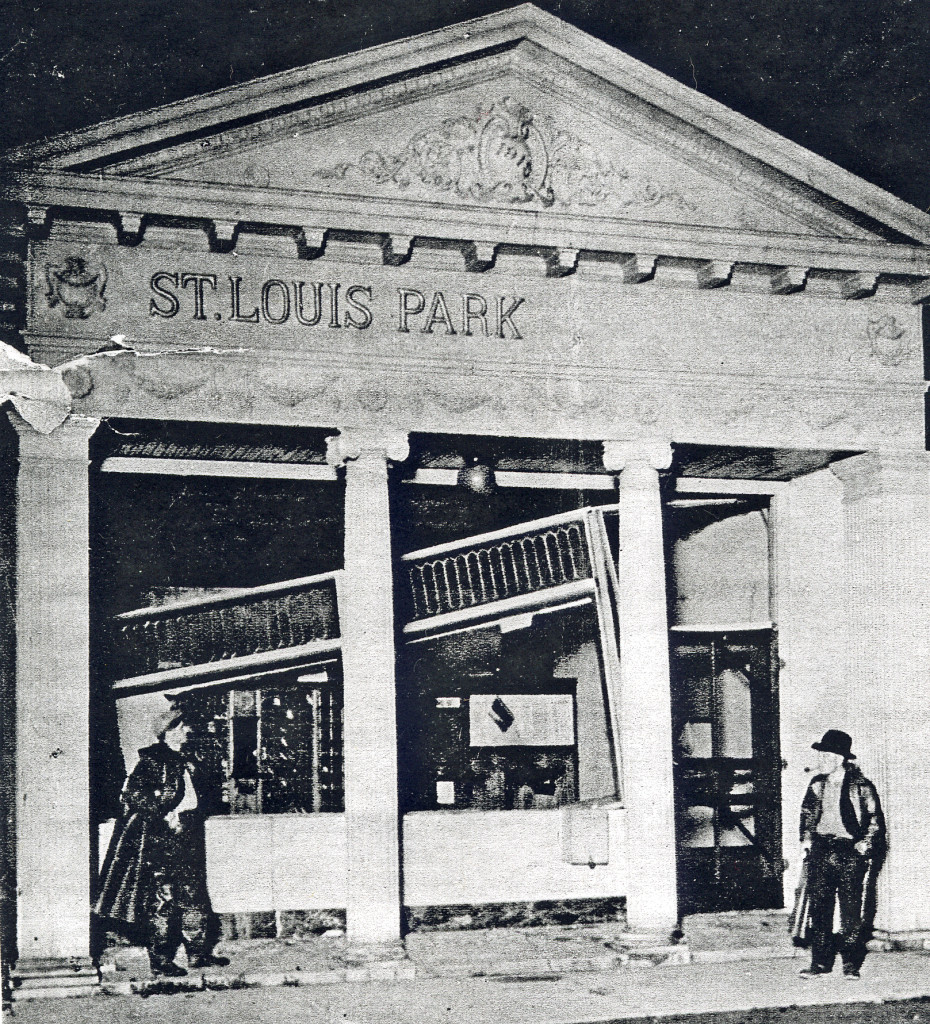
1929
The post office was burglarized when robbers broke in through a front window and stole stamps and cash.
Pete “Dutch” Goodhard became the first “foot” mail carrier in the Park, working his route in northeast St. Louis Park from 1929 to 1938. He walked about 20 miles each day, accompanied by a borrowed German Shepherd. He finally quit the route when he lost too much weight and was replaced by two men.
1930
A group of businessmen, dissatisfied with the postal service, signed a petition requesting that St. Louis Park become a branch of the Minneapolis Post Office. The change was made on September 30, 1930. Verne Langdon became superintendent of the Park branch, with Albert E. Lundberg as clerk. Langdon remained until he retired in 1956.
1933
The post office was burglarized by two young men who broke in through an adjoining restaurant. They broke into the safe, but were captured shortly afterwards. (See Police and Crime.) 1933 was also the year of a small fire in the building.
1937
The post office was moved to 6504 Walker Street. Staff increased to two rural carriers, 12 foot carriers and three clerks.
1943
In June 1943 the post office was moved to a larger space in the one-story portion of the Walker Building at 6512 Walker Street. The post office awarded a ten year lease to J.K. Seirup, the owner of the building.
Postal zones were instituted for larger cities: the zone for St. Louis Park was 16, with 26 added later for the area west of Dakota Avenue.
1950
In April, Postmaster of the U.S. Jesse Donaldson ordered that deliveries in residential areas be cut from two to one, and that deliveries to businesses be cut from three to two “in the interest of economy.”
1952
The new post office at 3425 Dakota held its Grand Opening on December 12, attended by 550 potential customers and Governor Orville Freeman. The building was erected by C. Ed Christy, behind (south) of his filling station. It replaced the former space on Walker Street. A June 26, 1952, article in the Dispatch indicated that the new space would be leased, and that 10-15 new carriers would be added. By that time the branch served 15,000 families and 800 businesses. The station served the new 26 zone, which became the 55426 zip code in 1963. It was in business until the Louisiana Post Office opened in 1966.
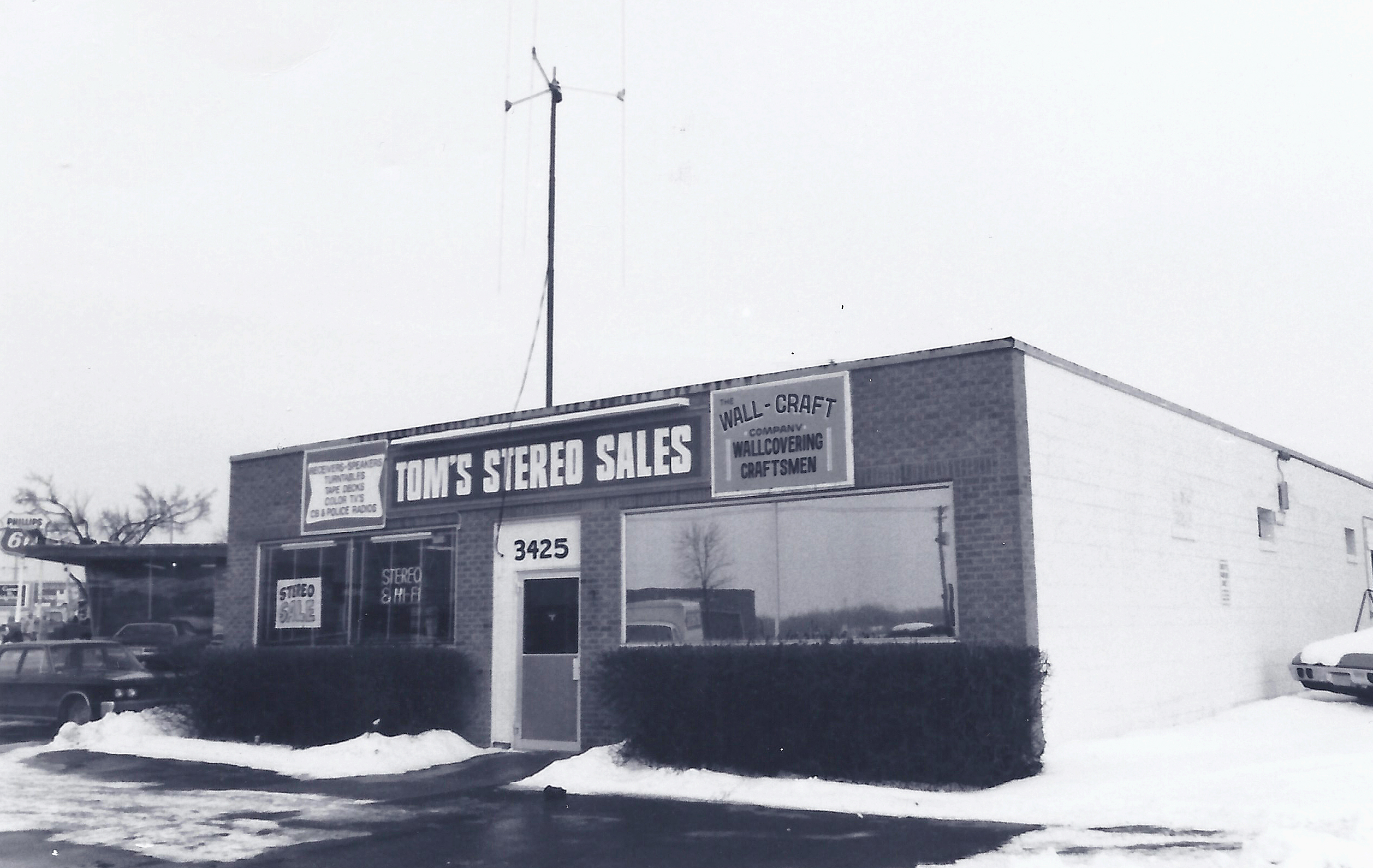
1956
With the retirement of Verne Langdon, Ebert Swenson became Station Superintendent and Al Pfeifer was his assistant. Employees were 99 Percent male, unionized, and according to Paul Tanick, had a strong sense of camaraderie.
On March 15, 1956, a Post Office at 3891 Wooddale (now Park Center Blvd.) was opened. Although it was referred to as the Miracle Mile post office, it was not actually in Miracle Mile. The building was built on land leased by Nick Phillips, owner of Lilac Way, at a cost of $27,000. It was open until about 1969. The building was demolished along with the rest of Lilac Way in 1984.
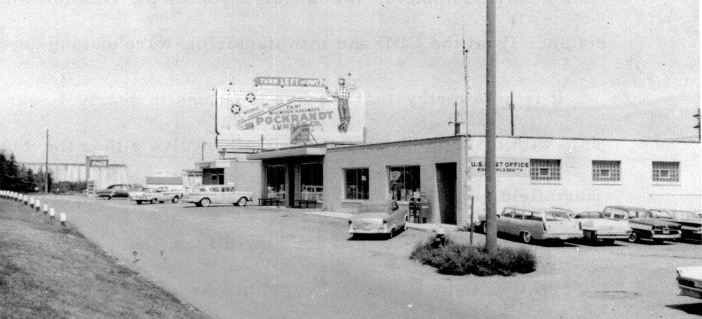
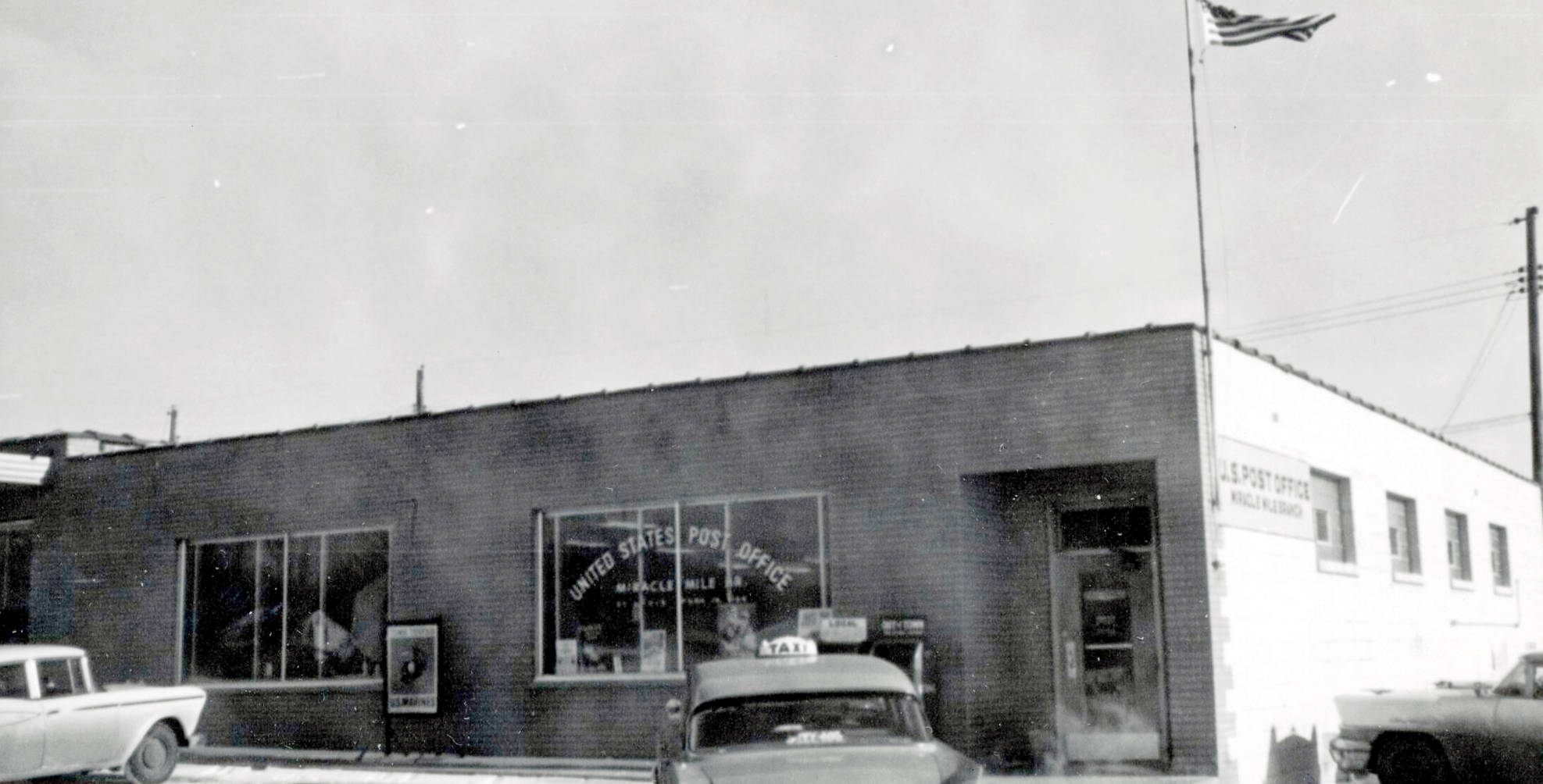
1957
Unable to convince Congress or President Eisenhower to give them pay raises, postal workers declared August 1, 1967 “prayer day for salary increases.” Paul Tanick reported: “newspapers throughout the country ran pictures of carriers and clerks gathered in front of post offices nationwide praying for a pay raise. Evidently, Ike didn’t read the papers. One month later he vetoed a postal pay raise.” A ten percent raise was passed the following year.
1962
Burglars got away with $1,000 in November 1962.
1963
In March 1963 burglars opened two safes and made off with $500 cash, $1,000 in stamps, and 900 money orders.
ZIP CODES (For a complete history see http://www.zipboundary.com/zipcode_history.html)
On July 1, 1963, ZIP codes were instituted. ZIP stands for Zone Improvement Plan. “Zip” the monkey was used to publicize the change. Mr. Zip the cartoon (see below) was also used. In May 1963 the Minneapolis City Council turned down the Postmaster’s request to paint Mr. Zip on sidewalks along with the words “zone your mail.”

The lowest ZIP codes started in the northeast and took a path south, west, north, southwest, and north again.
The lowest ZIP code is in Holtsville, New York: 00501, a ZIP Code exclusively for a U.S. Internal Revenue Service Center.
The highest ZIP code is in Ketchikan, Alaska: 99950
Although Zip codes were put into place on July 1, 1963, some places didn’t find out what their Zip code would be until just days before. In St. Louis Park, which at the time only had one Post Office, the entire city was 55416. When the second Post Office opened in 1966, Zip Codes west of Dakota were changed to 55426. Some places that are in St. Louis Park have Zip Codes from adjoining municipalities, such as Edina.
Zip codes apparently didn’t catch on very quickly, as President Johnson declared October 10-15, 1966, “ZIP Code Week,” and “appeal to the 200 million people of this country to help themselves by helping us in this field.”
Here’s a zippy number to convince you to use your ZIP Code!
1960s
There was a tradition of a couple of post office employees working at the liquor store at Reiss’s Restaurant. When one left, another one would take his place. Perhaps the postmen knew their way around town the best!
Paul Tanick reports that in the ’60s, a fleet of three-wheeled, fiberglass vehicles called “mailsters” were brought to Minneapolis. Carriers vigorously objected to the use of these vehicles as unsafe, but it took the death of a carrier at the Lake Street Station to have them taken off the road.
1966
St. Louis Park opened a second Post Office on the corner of 27th Street and Louisiana Ave. (official address 7203 W. 27th). The new post office opened on February 21, 1966. The plaque on the building says “This building dedicated to public service, 1966.” Paul Tanick reports that even with the new building there was not enough room for all routes, which at the time included all of 55426 and parts of 55416. The 55416 routes were sent to the Miracle Mile (Wooddale) station, and some routes west of Highway 169 were sent to Minnetonka.
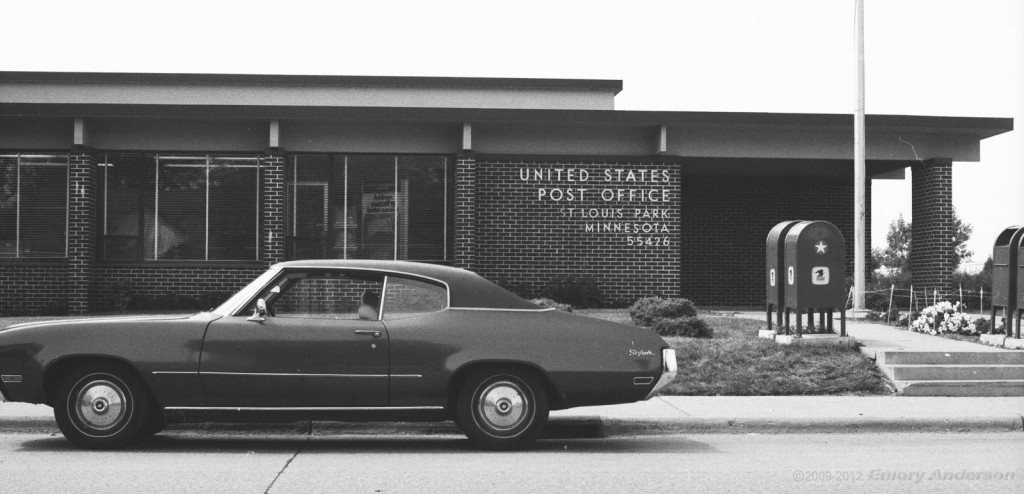
The photo below, donated by Paul Tanick, shows the employees of the Louisiana station at the time of the move. Pictured are Andy Hoffman, Henry Larson, Wally Eckdahl, Ebert Swenson, Al Iverson, Carl Bates, Vern Wehage, Chester Peterson, Morris Weisman, Tom Donahue, Forest Paulson, Harold Cather, Edward Geisel, Neil Gustafson, Art Teslow, Paul Tanick, Dick Burgin, John Conners, and Mike Vedgrian.
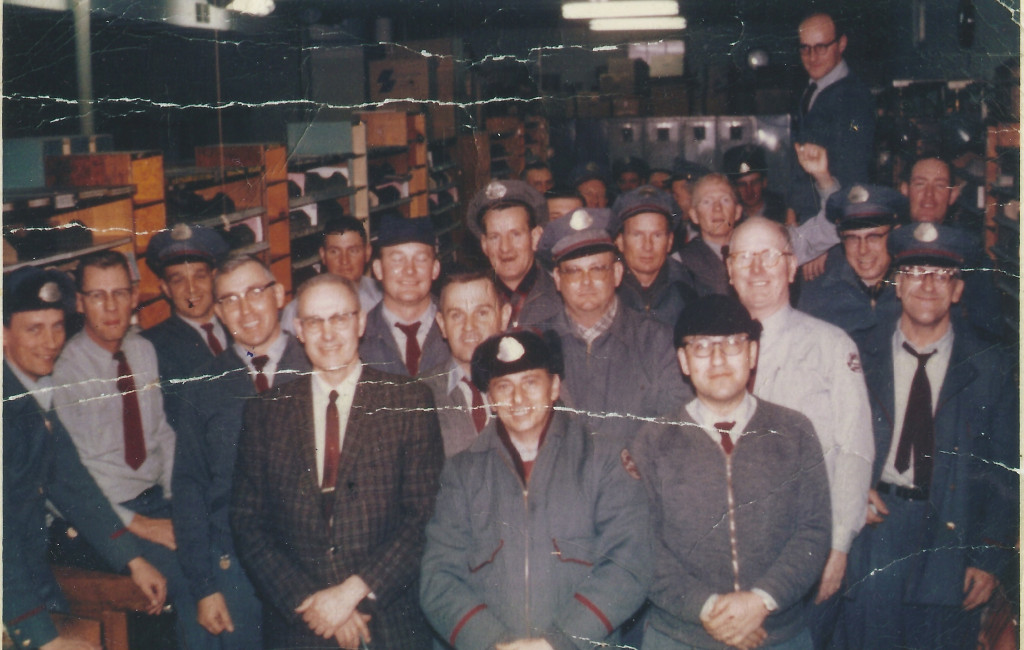
1967
In February 1967, the City Council put in a request to the Postal Service to provide “foot service” to the residents of the northwest area of the City.
@1969
The “Miracle Mile” post office on Wooddale last appears in the city directory in 1968, and the Elmwood Post Office first appears at 3532 Belt Line Blvd. in 1970 – neither was listed in 1969. It operated on Belt Line until 2003.

1970
Paul Tanick: “On March 16, 1970, a wildcat strike started in New York City, spreading through 14 states in 3 days, involved over 200,000 postal workers in 671 locations, and reorganized the post office to its present form. President Nixon called the armed forces into the post offices while postmen picked outside. Locally photographs of picketers were taken by representatives of the department. One bystander suggested abolishing the post office and having the garbage collectors distribute the mail on their weekly pickups. The Postmaster General finally agreed to negotiate if the workers would return to their jobs…. In August 1970, President Nixon signed the Postal Reorganization into law converting the Post Office into and independent establishment no longer dependent on Congress or the president for salary increases.”
1977
Verne Langdon died on November 24, 1977 at age 86. He had retired in 1956 after 41 years of service and moved to Venice, Florida in 1967. He was survived by wife Florence and daughter Mary.
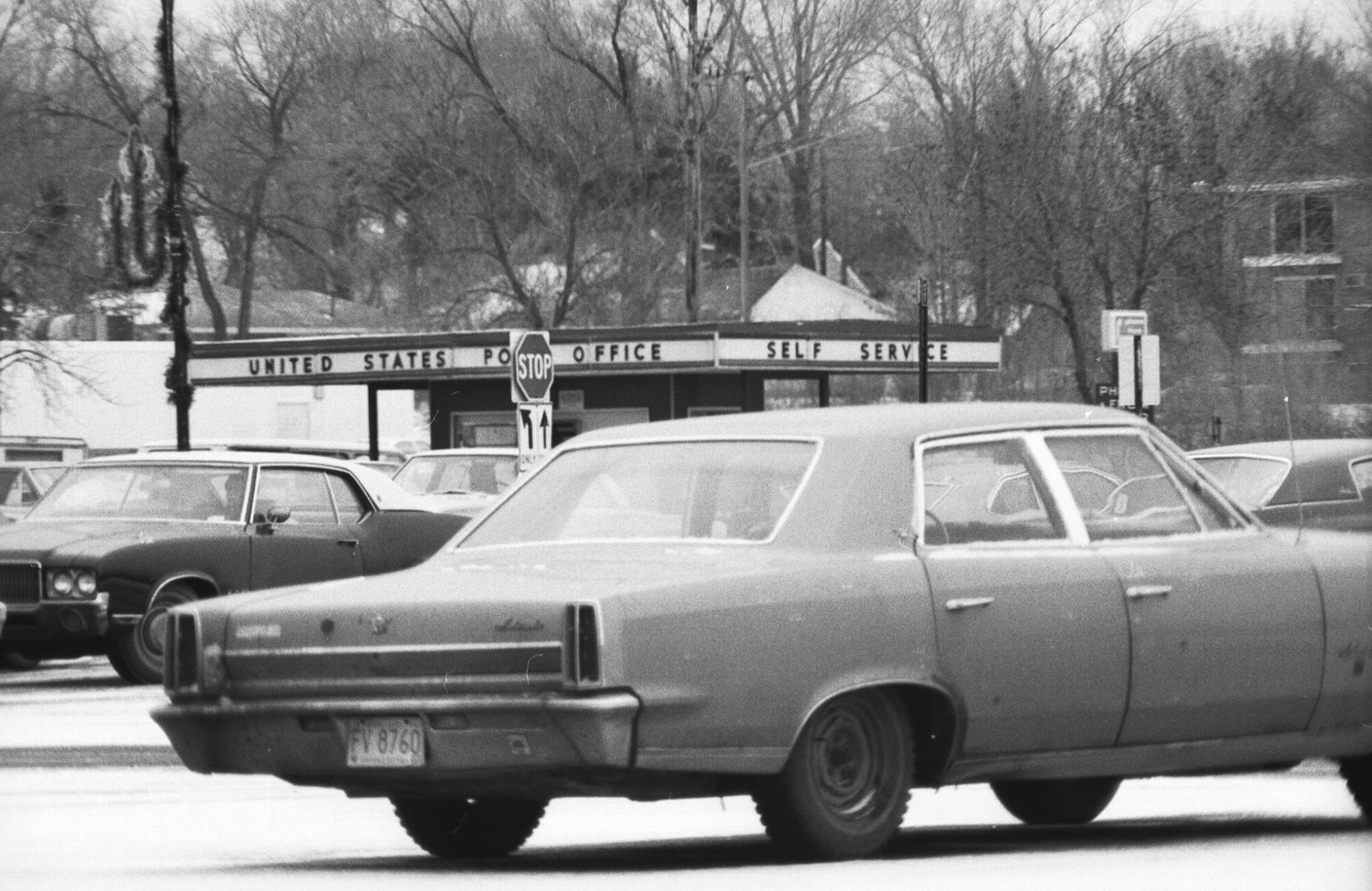
1983
The Post Office introduced the “zip plus four” system.
2003
The U.S. Postal Service was forced to vacate the old Elmwood Branch Post Office on Belt Line Blvd. by September 15, 2003. The owner had the building demolished for redevelopment – the area is now the parking lot for the Wolfe Park Professional Building at 5000 W. 36th Street. Until the new post office opened in 2005, residents who wished to pick up their mail had to do so at the Edina post office.
2005
The Grand Opening of the new Elmwood Branch at 5100 W. 36th Street was held on September 10, 2005. The building had been turned over to the Post Office by the City in April. There had been delays in opening because of a lack of employees and an improperly poured driveway.
